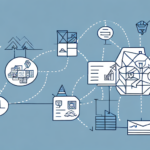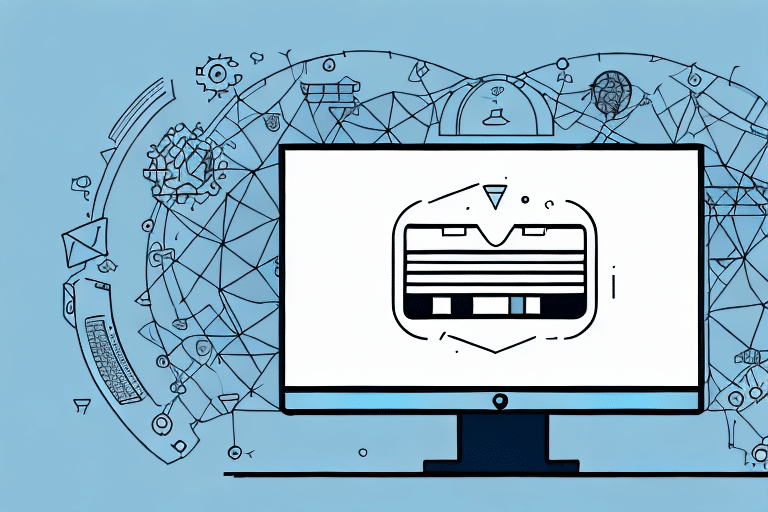Understanding the Pre-Arrival Processing System (PAPS)
The Pre-Arrival Processing System (PAPS) is a customs clearance system implemented by the United States Customs and Border Protection (CBP). The system is designed to expedite the customs clearance process for goods entering the US by allowing importers to submit required documentation electronically before the goods arrive at the port of entry. In this article, we’ll explore various aspects of PAPS, including its benefits, enrollment process, steps involved, key features, common challenges, and best practices to achieve a successful clearance process.
What is the Pre-Arrival Processing System (PAPS)?
PAPS streamlines the entire customs clearance process by enabling importers or their designated customs brokers to submit necessary documents electronically, such as the bill of lading, commercial invoice, and other supporting paperwork, before the goods reach the border. This proactive submission initiates the customs clearance process in advance, significantly enhancing speed and efficiency.
One of the key advantages of using PAPS is the increased visibility and control it offers over the customs clearance process. Importers can monitor the status of their shipments in real-time and receive notifications if any issues arise. Additionally, PAPS helps reduce the risk of customs penalties or delays caused by missing or incomplete documentation, as all required paperwork is reviewed prior to arrival.
Benefits of Using the Pre-Arrival Processing System (PAPS)
- Faster Clearance: Submitting documentation in advance allows customs clearance to begin immediately upon arrival, reducing wait times at ports.
- Enhanced Security: PAPS assists CBP in detecting and preventing illegal smuggling activities, ensuring a more secure import process.
- Cost Savings: By minimizing the use of paper documentation through electronic submissions, importers can achieve significant cost reductions and promote environmental sustainability.
- Real-Time Tracking: PAPS provides importers and customs brokers with the ability to track shipments throughout the supply chain, from loading to release.
- Improved Communication: Streamlined interactions between carriers, customs brokers, and government agencies lead to a more efficient supply chain.
According to the CBP, implementing PAPS can reduce clearance times by up to 50%, allowing businesses to operate more efficiently and respond swiftly to market demands.
How to Enroll in the Pre-Arrival Processing System (PAPS)
Enrollment in PAPS is a straightforward process available to any US-based importer authorized to do business with CBP. Here are the steps to enroll:
- Register with CBP: Importers can register directly through the CBP website or work with a qualified customs broker to facilitate the registration process.
- Submit Required Documentation: Provide necessary business information and documentation as specified by CBP.
- Gain Access: Once approved, importers receive access credentials to the PAPS platform, enabling them to submit electronic documents for future shipments.
Enrolling in PAPS can significantly reduce the time and costs associated with customs clearance. By ensuring that all documentation is accurate and complete prior to shipment arrival, importers can avoid delays and additional fees.
Steps Involved in the Pre-Arrival Processing System (PAPS)
The PAPS clearance process involves two main phases: submission and release.
- Submission: The importer or designated broker submits the required documentation electronically to CBP before the goods arrive at the port of entry. This includes the bill of lading, commercial invoice, packing list, and any other supporting documents.
- Release: Upon receipt, CBP reviews and verifies the submitted information, cross-referencing it with other data sources to ensure compliance. Once the review is complete and no issues are found, the goods are cleared for release, allowing the importer to take possession promptly.
It's important to note that PAPS is primarily applicable to goods transported by road or rail. For goods arriving by air or sea, the Automated Commercial Environment (ACE) system is used instead, which operates similarly but has distinct documentation and procedures.
PAPS also utilizes a Single Transaction Number (STN) to track the progress of shipments throughout the clearance process. This unique identifier facilitates seamless communication among importers, brokers, carriers, and CBP, minimizing errors and delays.
Key Features of the Pre-Arrival Processing System (PAPS)
- Electronic Submission: Importers can submit all necessary documentation online, reducing the reliance on paper and speeding up the clearance process.
- Real-Time Tracking: Monitor the status of shipments in real-time, from departure to arrival, ensuring full visibility throughout the supply chain.
- Online Access: Manage accounts, make payments, and access all relevant customs information through an intuitive online portal.
- System Integration: PAPS seamlessly integrates with other systems such as ACE and the Automated Broker Interface (ABI), facilitating efficient data exchange between stakeholders.
- Enhanced Security: Advanced encryption and authentication protocols protect sensitive trade data and financial transactions, safeguarding against fraud and unauthorized access.
These features collectively make PAPS a robust solution for importers seeking to enhance their customs clearance operations.
Differences Between PAPS and Other Customs Clearance Systems
While several customs clearance systems are available to US-based importers, PAPS distinguishes itself through its level of automation and electronic processing capabilities. Here are some key differences:
- Electronic vs. Manual Submission: Unlike traditional systems that may require physical documents at the port, PAPS enables complete electronic submission, accelerating the clearance process.
- Automation: PAPS leverages Electronic Data Interchange (EDI) to automate data transmission between importers, brokers, and CBP, reducing manual errors and processing times.
- Real-Time Tracking: PAPS offers comprehensive real-time tracking of shipments, a feature that may be limited or absent in other systems.
- Security Measures: With advanced encryption and strict access controls, PAPS provides a higher level of data security compared to some alternative systems.
These distinctions make PAPS a preferred choice for importers seeking efficiency, security, and real-time visibility in their customs clearance processes.
Common Challenges Faced While Using the Pre-Arrival Processing System (PAPS)
Despite its many benefits, PAPS is not without challenges. Common issues importers may encounter include:
- Technical Difficulties: Users might face technical glitches with the electronic submission system, leading to delays in document processing.
- Documentation Errors: Mistakes or omissions in submitted documents can result in delays or rejections, complicating the clearance process.
- CBP Reviews: Additional reviews by CBP officials may occur if discrepancies are found, extending the clearance timeline.
To mitigate these challenges, it's essential for importers to ensure accurate and complete documentation, utilize reliable customs brokers, and stay informed about any system updates or regulatory changes.
Best Practices for a Successful PAPS Clearance Process
Adopting the following best practices can enhance the efficiency and success of the PAPS clearance process:
- Accurate Documentation: Always provide complete and error-free documentation to avoid delays and potential penalties.
- Timely Submission: Submit all required documents well in advance of the goods' arrival to allow ample time for processing.
- Stay Informed: Keep up-to-date with relevant CBP regulations and any changes to the PAPS system to ensure compliance.
- Use Reputable Customs Brokers: Partnering with experienced and knowledgeable customs brokers can streamline the submission process and address any issues promptly.
- Implement Tracking Systems: Utilize the real-time tracking features of PAPS to monitor shipments and proactively address any potential delays.
By following these best practices, importers can achieve a smoother and more efficient customs clearance experience through PAPS.
Future of PAPS and Its Impact on Trade and Commerce
The future of PAPS is poised to align with the growing emphasis on digitization and automation in global trade. As international trade volumes increase, PAPS is expected to evolve, offering enhanced features and greater integration with emerging technologies such as blockchain and artificial intelligence.
These advancements will likely further streamline the customs clearance process, reduce manual intervention, and improve data accuracy. Additionally, PAPS will continue to play a crucial role in enhancing border security by incorporating more sophisticated risk assessment tools and data analytics.
Overall, the ongoing development of PAPS will significantly impact trade efficiency, enabling businesses to respond more swiftly to market demands and fostering stronger international commerce relations.
How PAPS Has Evolved Over the Years to Improve Border Security
Since its inception, PAPS has undergone numerous enhancements aimed at bolstering the security of US borders. Key developments include:
- Advanced Screening: Integration of more sophisticated screening technologies to better detect fraudulent or dangerous shipments.
- Enhanced Data Analytics: Utilization of big data and machine learning algorithms to analyze shipment data for potential risks.
- Strengthened Authentication: Implementation of stronger authentication protocols to ensure that only authorized users can access and submit information through PAPS.
- Collaborative Efforts: Increased collaboration between CBP and international trade partners to share intelligence and improve overall security measures.
These improvements ensure that PAPS not only facilitates efficient trade but also maintains the highest standards of security, protecting the integrity of US borders.
Case Studies of Businesses That Have Benefited from Using PAPS
Numerous businesses have reaped significant benefits from implementing PAPS in their import operations. Here are a few examples:
- US-Based Food Importer: By utilizing PAPS, a food importer reduced clearance times for perishable goods by over 80%, ensuring fresher products reach the market faster.
- Electronics Distributor: An electronics company saved thousands of dollars annually on paperwork and administrative costs by transitioning to electronic documentation through PAPS.
- Apparel Manufacturer: A clothing manufacturer improved supply chain transparency and reduced inventory holding costs by leveraging PAPS’s real-time tracking features.
These case studies demonstrate how PAPS can enhance operational efficiency, reduce costs, and improve overall business performance for importers across various industries.
Frequently Asked Questions About the Pre-Arrival Processing System (PAPS)
Here are answers to some common questions regarding PAPS:
- What types of goods can be cleared using PAPS?
- Generally, any goods eligible for release through CBP can utilize PAPS, provided they meet all regulatory requirements and documentation standards.
- Is the use of PAPS mandatory for importers?
- No, while PAPS is not mandatory, many importers choose to use it for its efficiency and time-saving benefits.
- How does PAPS compare to other customs clearance methods?
- PAPS offers faster clearance times, electronic documentation, and real-time tracking, making it a more efficient option compared to traditional manual methods.
- Where can I find more information about PAPS?
- The CBP website provides comprehensive information and resources about PAPS.
Comparing PAPS with Other Customs Clearance Systems for Importers and Exporters
When evaluating customs clearance systems, importers and exporters have several options to consider. Here's how PAPS stacks up against other prominent systems:
- Automated Commercial Environment (ACE): While ACE serves a broader range of import and export activities, PAPS is specialized for pre-arrival processing, offering a more focused approach for expedited clearance.
- Automated Broker Interface (ABI): ABI facilitates communication between customs brokers and CBP, but PAPS integrates seamlessly with ABI to enhance document submission and tracking.
- Importer Security Filing (ISF): ISF is primarily concerned with security filings for ocean shipments, whereas PAPS covers a wider array of transport modes, including road and rail.
Overall, PAPS is recognized for its expedited clearance process, electronic documentation capabilities, and real-time tracking, making it a preferred choice for importers seeking efficiency and enhanced visibility in their customs operations.
How to Troubleshoot Common Issues When Using PAPS
Encountering issues with PAPS can disrupt the customs clearance process. Here are steps to troubleshoot common problems:
- Technical Issues: If you experience technical difficulties with the PAPS platform, first check for any system outages or maintenance notices on the CBP website. If the issue persists, contact CBP support or your designated customs broker for assistance.
- Documentation Errors: Carefully review all submitted documents for accuracy and completeness. Correct any errors and resubmit promptly to avoid further delays.
- Delayed Clearance: If clearance is delayed due to additional CBP reviews, communicate with your customs broker to understand the specific issues and provide any requested information swiftly.
Proactive measures, such as thorough documentation and regular system checks, can help prevent many common issues when using PAPS.




















